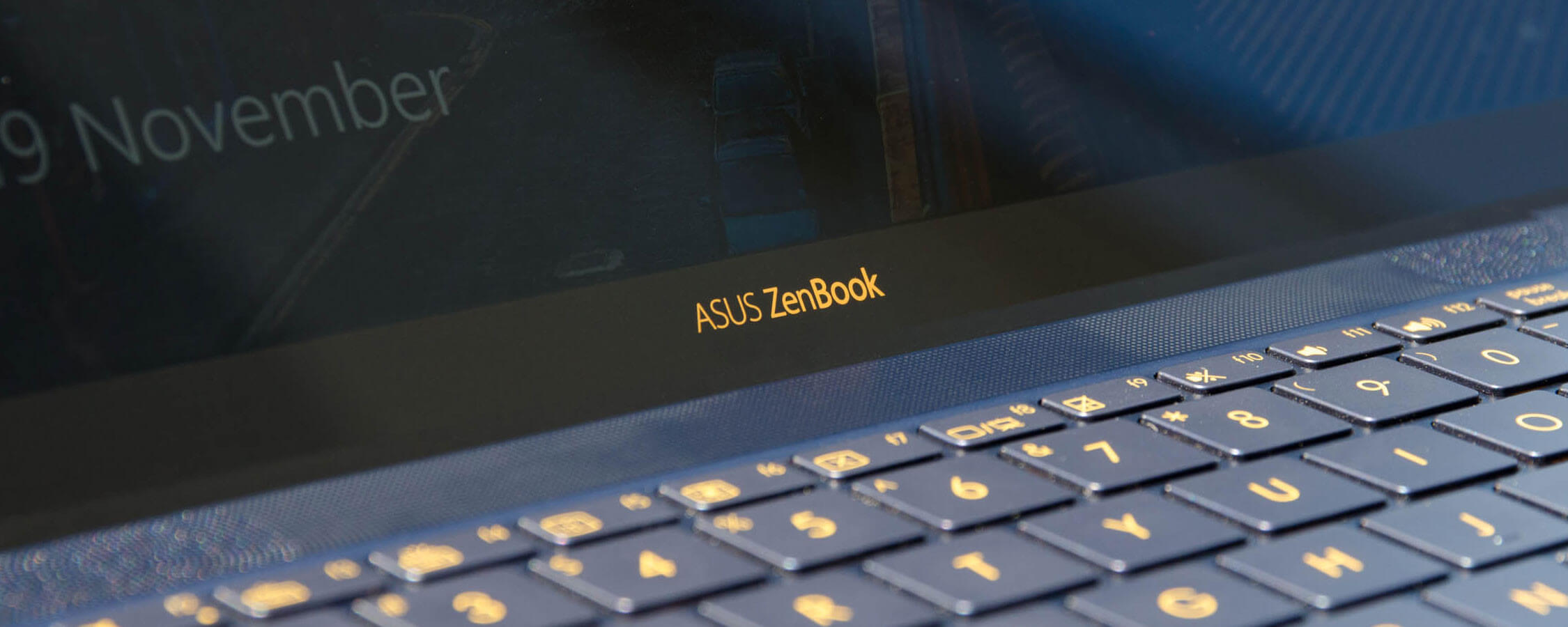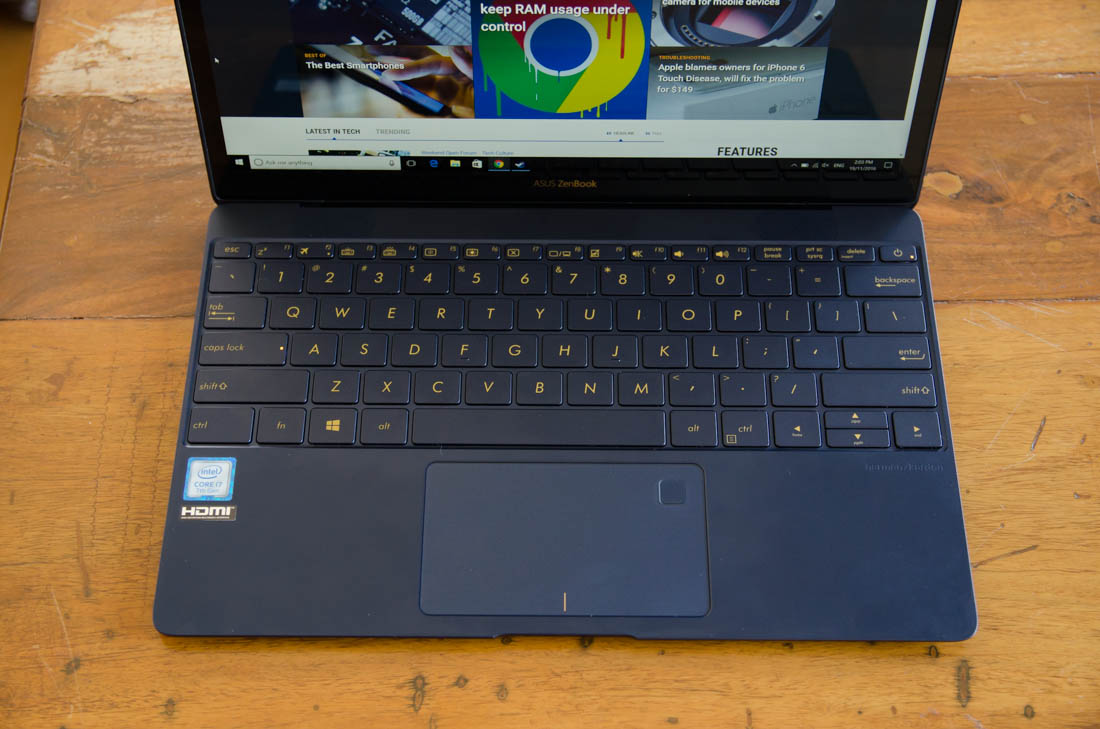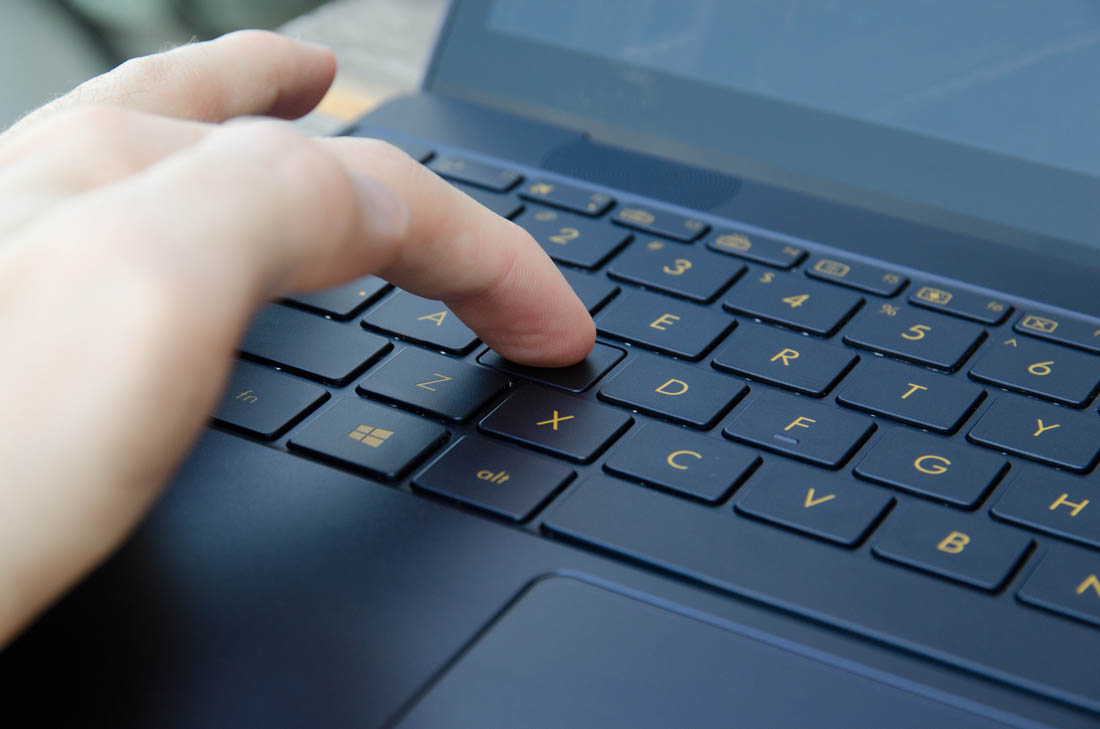Display, Keyboard and Trackpad
The ZenBook 3 is blessed with a 12.5-inch 1920 x 1080 IPS LCD, which is slightly smaller than your typical ultraportable. At 176 PPI, the display provides a crisp viewing experience at a typical viewing distance, and I found the default Windows scaling level of 125% perfect for this screen size. And thanks to huge improvements to high-DPI scaling in Windows 10 recently, I rarely encountered dreaded blurred text.
The display is reasonably bright, pushing out around 340 nits, which is typical for a laptop of this class. Viewing angles were great, although the glossy finish can reflect background light at times. However, this glossy finish does enhance the appearance of colors and makes the display 'pop' more than it would otherwise.
The color quality of the ZenBook 3's display is difficult to measure as Asus has implemented dynamic contrast adjustment that seemingly cannot be disabled. Asus even have a utility that can be used to change the display mode, called Asus Splendid Technology, however this utility includes no dynamic range toggle. This is frustrating for creative professionals that want color accuracy, as the always-changing color performance of the ZenBook prevents it from ever being color accurate.
By default, the ZenBook 3 does have a strong blue tint to the display due to a cold overall color temperature. This can be adjusted in the included display utility if you so choose. The screen tends to look quite good, due to deep blacks and saturated colors, however dynamic contrast adjustments are noticeable and somewhat annoying. Regular users probably won't notice or care, but I'd be more positive about the display if the ZenBook had a static contrast mode.
The keyboard included on this laptop is hit or miss. The large layout makes it easy to hit individual keys, and I love the amount of space allocated to important keys like shift, enter and backspace. Each key is noticeably larger than the keyboard on my Dell XPS 13, and that's because Asus dedicated as much width as they possibly could to the ZenBook 3's keyboard.
While the size of the keyboard is impressive, it doesn't provide a particularly great typing experience. If you don't like the MacBook's keyboard, you won't like the ZenBook 3's keyboard, and that's down to lack of travel distance.
Asus advertises 0.8mm of travel as "impressive", but typing on the ZenBook's keyboard is only one step better than typing on a touchscreen. Simply put, the abrupt end to each key's travel leads to unpleasant tactile feedback. The Dell XPS 13 and even the slim HP Spectre offer much better keyboards with increased travel distance.
On a more positive note is the glass trackpad Asus has included. Despite the awkward placement of the fingerprint sensor, the trackpad is a good size and delivers a pleasant physical click. Best of all, the trackpad is very responsive and didn't require a massive increase in sensitivity to make it usable. If Asus placed the fingerprint sensor elsewhere, the trackpad would be perfect for a device of this size.




